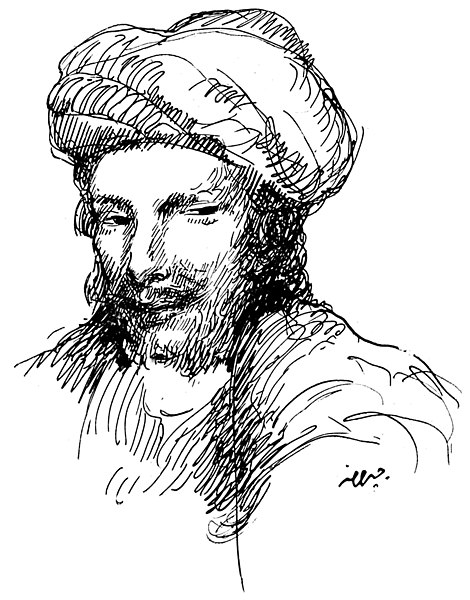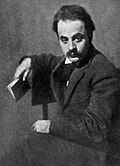Ta'ãnga:Abu Nuwas.jpg

Tamaño de esta previsualización: 470 × 600 píxeles. Otras resoluciones: 188 × 240 píxeles | 376 × 480 píxeles | 833 × 1063 píxeles.
Marandurenda moambue'ỹre (833 × 1063 píxeles; tamaño de archivo: 323 kB; tipo MIME: image/jpeg)
Marandurenda rembiasakue
Ejopy peteĩ ára/aravo rehe rehecha hag̃ua pe marandurenda ojehechaukaháicha upe jave.
| Ára/Aravo | Michĩháicha | Tuichakue | Puruhára | Jehaimombyky | |
|---|---|---|---|---|---|
| ko’ag̃agua | 20:17 7 jasypoapy 2019 |  | 833 × 1063 (323 kB) | FunkMonk | Bigger. |
| 11:14 2 jasypoapy 2008 |  | 242 × 305 (36 kB) | FunkMonk | {{Information |Description=Abu Nuwas, Drawing by Kahlil Gibran al-Funun 2, no. 1 (June 1916) |Source=http://www.al-funun.org/al-funun/images/index.html |Date=June 1916 |Author=Kahlil Gibran |Permission= |other_versions= }} {{ImageUpload|basic}} |
Marandurenda jeporu
La siguiente página usa este archivo:
Marandurenda jepuru opaite tembiapópe
Ko'ã ambue wiki oipuru ko marandurenda:
- Jeporu af.wikipedia.org rehe
- Jeporu als.wikipedia.org rehe
- Jeporu alt.wikipedia.org rehe
- Jeporu an.wikipedia.org rehe
- Jeporu ar.wikipedia.org rehe
- Jeporu ar.wikiquote.org rehe
- Jeporu ar.wikisource.org rehe
- Jeporu arz.wikipedia.org rehe
- Jeporu ast.wikipedia.org rehe
- Jeporu av.wikipedia.org rehe
- Jeporu azb.wikipedia.org rehe
- Jeporu az.wikipedia.org rehe
- Jeporu bat-smg.wikipedia.org rehe
- Jeporu ba.wikipedia.org rehe
- Jeporu be-tarask.wikipedia.org rehe
- Jeporu be.wikipedia.org rehe
- Jeporu bg.wikipedia.org rehe
- Jeporu bi.wikipedia.org rehe
- Jeporu bjn.wikipedia.org rehe
- Jeporu bn.wikipedia.org rehe
- Jeporu br.wikipedia.org rehe
- Jeporu bs.wikipedia.org rehe
- Jeporu bxr.wikipedia.org rehe
- Jeporu ca.wikipedia.org rehe
- Jeporu ce.wikipedia.org rehe
- Jeporu ckb.wikipedia.org rehe
- Jeporu co.wikipedia.org rehe
- Jeporu cs.wikipedia.org rehe
- Jeporu cy.wikipedia.org rehe
- Jeporu da.wikipedia.org rehe
- Jeporu de.wikipedia.org rehe
- Jeporu el.wikipedia.org rehe
- Jeporu en.wikipedia.org rehe
Ver más uso global de este archivo.

